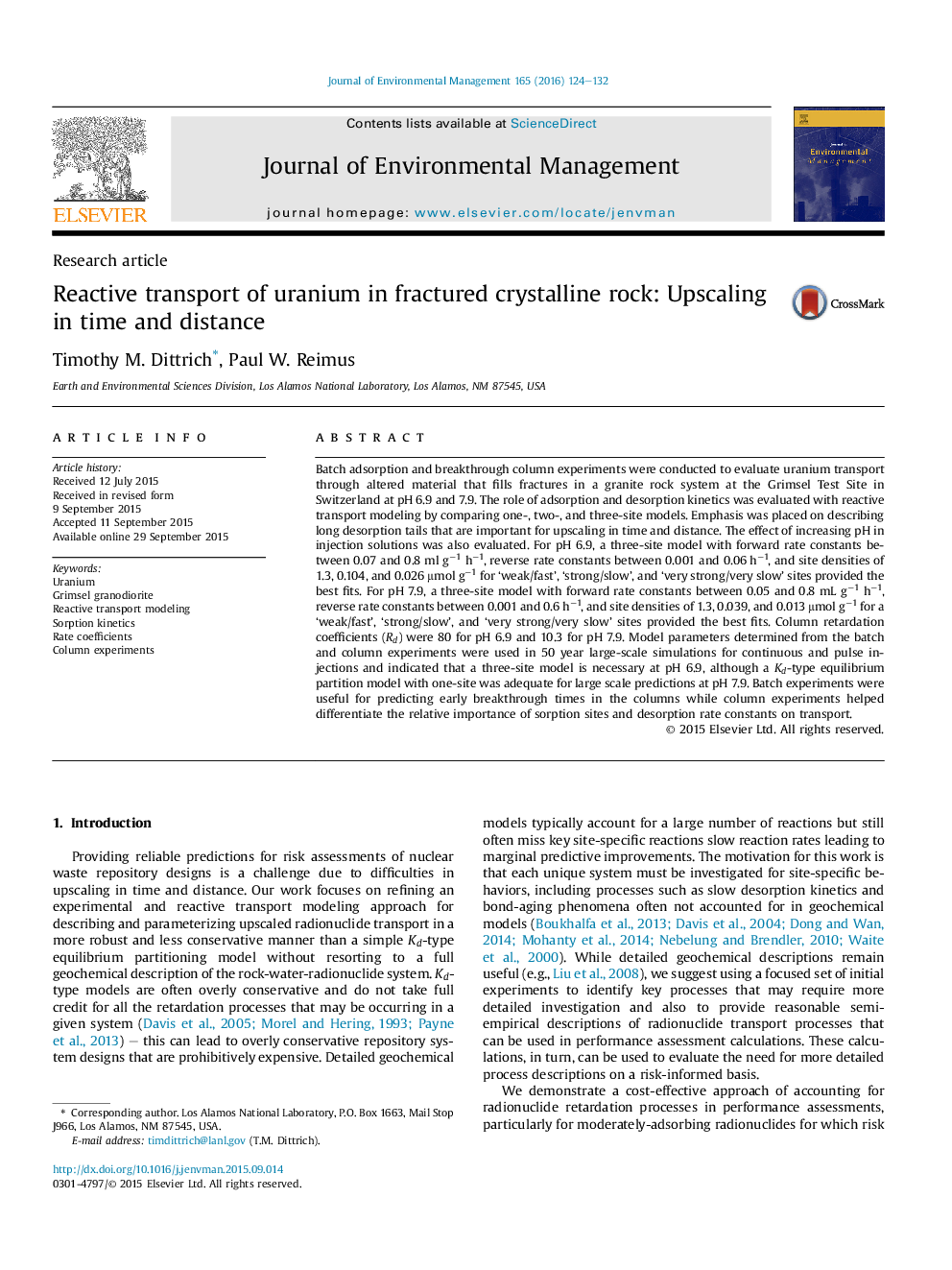| Article ID | Journal | Published Year | Pages | File Type |
|---|---|---|---|---|
| 1055481 | Journal of Environmental Management | 2016 | 9 Pages |
•Uranium batch sorption and column breakthrough experiments were conducted.•Synthetic groundwater and geochemically altered granodiorite were studied.•A three-site kinetic model fit results well for pH 6.9 and 7.9 solutions.•Column retardation coefficients (Rd) were 80 for pH 6.9 and 10.3 for pH 7.9.•50 year large-scale simulations were performed (pulse and continuous injection).
Batch adsorption and breakthrough column experiments were conducted to evaluate uranium transport through altered material that fills fractures in a granite rock system at the Grimsel Test Site in Switzerland at pH 6.9 and 7.9. The role of adsorption and desorption kinetics was evaluated with reactive transport modeling by comparing one-, two-, and three-site models. Emphasis was placed on describing long desorption tails that are important for upscaling in time and distance. The effect of increasing pH in injection solutions was also evaluated. For pH 6.9, a three-site model with forward rate constants between 0.07 and 0.8 ml g−1 h−1, reverse rate constants between 0.001 and 0.06 h−1, and site densities of 1.3, 0.104, and 0.026 μmol g−1 for ‘weak/fast’, ‘strong/slow’, and ‘very strong/very slow’ sites provided the best fits. For pH 7.9, a three-site model with forward rate constants between 0.05 and 0.8 mL g−1 h−1, reverse rate constants between 0.001 and 0.6 h−1, and site densities of 1.3, 0.039, and 0.013 μmol g−1 for a ‘weak/fast’, ‘strong/slow’, and ‘very strong/very slow’ sites provided the best fits. Column retardation coefficients (Rd) were 80 for pH 6.9 and 10.3 for pH 7.9. Model parameters determined from the batch and column experiments were used in 50 year large-scale simulations for continuous and pulse injections and indicated that a three-site model is necessary at pH 6.9, although a Kd-type equilibrium partition model with one-site was adequate for large scale predictions at pH 7.9. Batch experiments were useful for predicting early breakthrough times in the columns while column experiments helped differentiate the relative importance of sorption sites and desorption rate constants on transport.
